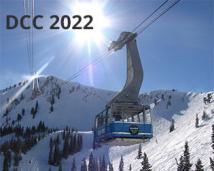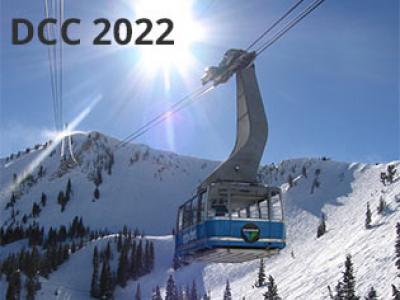
DCC 2022 Conference - The Data Compression Conference (DCC) is an international forum for current work on data compression and related applications. Both theoretical and experimental work are of interest. Visit the DCC 2022 website.

- Read more about On different variants of the Burrows-Wheeler-Transform of string collections
- Log in to post comments
The extended Burrows-Wheeler-Transform (eBWT), introduced by Mantaci et al. [Theor. Comput. Sci., 2007], is a generalization of the Burrows-Wheeler-Transform (BWT) to multisets of strings. While the original BWT is based on the lexicographic order, the eBWT uses the omega-order, which differs from the lexicographic order in important ways. A number of tools are available that compute the BWT of string collections; however, the data structures they generate in most cases differ from the one originally defined, as well as from each other.
- Categories:
 84 Views
84 Views
- Read more about SortComp (Sort-and-Compress) - Towards a Universal Lossless Compression Scheme for Matrix and Tabular Data
- 1 comment
- Log in to post comments
A universal scheme is proposed for the lossless compression of two-dimensional tables and matrices. Instead of standard row- or column-based compression, we propose to sort each column first and record both the sorted table and the corresponding permutation table of the sorting permutations. These two tables are then separately compressed. In this new scheme, both intra- and inter-column correlations can be efficiently captured, giving rise to improved compression ratio in particular when both column-wise and row-wise dependencies cooccur.
- Categories:
 166 Views
166 Views
3-D point clouds rendering solid representations of scenes or objects often carry a tremendous amount of points, compulsorily requesting high-efficiency compression for storage and transmission. In this paper, we propose a novel p-Laplacian embedding graph dictionary learning algorithm for 3-D point cloud attribute compression. The proposed method integrates the underlying graph topology to the learned graph dictionary capitalizing on p-Laplacian eigenfunctions and leads to parsimonious representations of 3-D point clouds.
- Categories:
 87 Views
87 Views
- Read more about A low-complexity destriping method for lossless compression of remote-sensing data
- Log in to post comments
- Categories:
 31 Views
31 Views
Existing methods for cross-component prediction focus on the chroma intra prediction but neglect the chroma prediction across multiple frames. In this paper, we propose a novel compression framework that leverages chroma frame sampling and inter-frame chroma prediction to address this problem. Specifically, chroma frame sampling discards the chroma components in inter-predicted frames to further reduce the bit consumption, whereas inter-frame chroma prediction recovers the discarded chroma components with optical flow estimation and post-training optimization for a guaranteed fidelity.
- Categories:
 43 Views
43 Views
- Read more about Neural JPEG: End-to-End Image Compression Leveraging a Standard JPEG Encoder-Decoder
- Log in to post comments
Recent advances in deep learning have led to superhuman performance across a variety of applications. Recently, these methods have been successfully employed to improve the rate-distortion performance in the task of image compression.
- Categories:
 37 Views
37 Views
- Read more about Cross-component Sample Adaptive Offset
- Log in to post comments
This paper proposes one new in-loop filtering technique cross-component sample adaptive offset (CCSAO) for further coding efficiency improvement beyond Versatile Video Coding (VVC). The CCSAO reduces the sample distortion by 1) utilizing the strong correlation between luma and chroma components to classify the reconstructed samples into different categories and 2) deriving one offset for each category and adding the offset to the samples in the category. The offset of each category is properly derived at encoder and signaled to decoder.
- Categories:
 213 Views
213 Views
- Categories:
 34 Views
34 Views
- Read more about An Improvement to Intra Block Copy in VVC with Reference Area Redefinition
- Log in to post comments
DCC2022_xu.pdf
- Categories:
 58 Views
58 Views